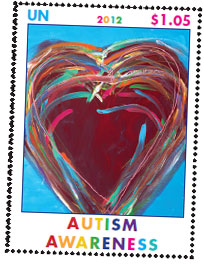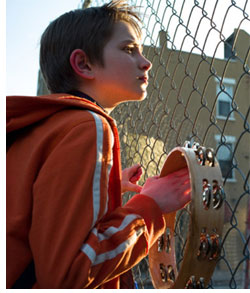by Bob Glowacki
 Earlier this week I shared a guest post about autism and apps. The post was written by one of our senior therapists here at Easter Seals Southeast Wisconsin, and as a follow-up I am introducing another one of our senior therapists here. Her sons both have autism, and in this guest post she explains how they use iPad apps to help them communicate.
Earlier this week I shared a guest post about autism and apps. The post was written by one of our senior therapists here at Easter Seals Southeast Wisconsin, and as a follow-up I am introducing another one of our senior therapists here. Her sons both have autism, and in this guest post she explains how they use iPad apps to help them communicate.
Mom gives autism app a thumbs-up
by Autism Senior Therapist
Our two boys have come a long way over the years, and we credit a good portion of their recent improvements to the iPad and its apps, as well as to their hard work.
Zack is 8 years old and does not meaningfully use verbal language besides a handful of verbal approximations such as “dada,” “mama,” “wee” for swing, and “ah ol” for apple. Zack does try very hard to imitate the sounds and words that he hears, but when he isn’t sure, falls back on sounds he knows like “buh” or “duh” to request items. Braeden is 7 years old and has started to use quite a few spontaneous and meaningful words within the last year or so, but not always enough to convey a clear message, especially if he is upset or hurt.
Both Zack and Braeden are currently working with therapists to improve their language skills, cognitive abilities, and social awareness. The use of an augmentative communication device has helped both boys tremendously in these areas. Where there once may have been frustration, both boys are now able to look through buttons in the Proloquo2Go app on their iPad or iPhone. They select from pictures and words of items in our home, at school, and in the community to help them express themselves. Becoming frustrated has decreased significantly now that they are able to easily ask for desired items, where once they may have gotten upset when we did not understand.
The iPad requires them to hold the device and use their hands to push buttons and scroll through pages, which means their self-stimulatory hand flapping and hand clapping behaviors have decreased, too.
The iPad is able to support hundreds of educational and reinforcing apps that both boys enjoy — their attention and focus have increased substantially. Even during therapy, the boys want to work when the iPad is involved! Both boys have been moving much quicker through their therapy programs, which means they are learning at a faster rate. The boys are more social and seem happier than ever before, which we attribute greatly to the fact that now we are able to understand what they are trying to tell us or ask for and that they get many of the things they commonly ask for, such as tickles or playing chase.
The ability to individualize the app allows it to be used exactly as needed by each owner. As an Autism Services Senior Therapist, I have encouraged countless families to invest in their children by focusing on communication. One of the ways that I do this is by promoting the iPad and the ProLoQuo2Go app. Experience has shown me that children pick up how to use the device and app very quickly. The iPad can be used as a communication device, an academic and social skill builder, a visual schedule, a reinforcer, and so much more! It is by far the best tool that I have come across to give individuals with autism a voice.







 This week Food Lion launched its annual
This week Food Lion launched its annual  In my other life, I’m a writing teacher. I give
In my other life, I’m a writing teacher. I give  I was invited to the White House today to hear the President announce that 10 states are getting waivers under the
I was invited to the White House today to hear the President announce that 10 states are getting waivers under the  Every year as Academy Award time draws near our department here at Easter Seals Headquarters gets to talking about the low number of people with disabilities in popular films. This year I piped up. “How about the kid in ‘Extremely Loud and Incredibly Close’?” I said. “He has Asperger’s.” Turns out I was wrong about that, though.
Every year as Academy Award time draws near our department here at Easter Seals Headquarters gets to talking about the low number of people with disabilities in popular films. This year I piped up. “How about the kid in ‘Extremely Loud and Incredibly Close’?” I said. “He has Asperger’s.” Turns out I was wrong about that, though. A couple years ago my Seeing Eye dog Hanni and I traveled to Topeka to visit
A couple years ago my Seeing Eye dog Hanni and I traveled to Topeka to visit  Earlier this week I shared a
Earlier this week I shared a